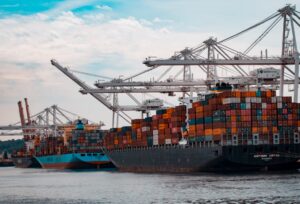Do you know the mapping app in your mobile phone functions due to geolocalization? Whenever companies want to know the location of a user, they use geolocation data. This practice has become so common that geolocalization is used for almost all the basic activities of a user’s daily life.
Moreover, with developing technology, geolocalization facilities will only improve. Geolocalization will maximize smart city efficiency, ensure autonomous drone deliveries and promote location-based market strategies. So, keep reading to know about the geolocalization trends to watch for in 2023.
Table of Contents
What is geolocalization?
Have you ever noticed that whenever you move to a new place, the apps on your phone know exactly where you are? It is because these apps, or companies that run them, use your geolocation data.
Geolocalization refers to the virtual pinpointing of a user’s real-world geographical location. This momentous task is performed by collecting data from electronic devices that a user is using.
Device-based data through GPS and cellular network and server-based data through wifi and ethernet connection are used collectively to determine the accurate location of a user’s electronic device. This data is then used to provide the best user experience.
The future of geolocalization: top 5 trends
The potential of geolocalization is immense. And the current geolocalization technology is advancing at a rapid pace to achieve its potential. A few upcoming geolocalization features can change the user experience as you know it for the better. So, here are the top 7 trends to watch for in 2023.
1. Maximizing smart city and urban efficiency
Using geolocalization simply improves every aspect of a smart city. Urban planners can plan better smart cities, with less traffic congestion, optimal energy use, and better crime prevention, using the geolocation data of citizens. In addition, they can also develop shopping complexes and real estate apartments in ideal places by analyzing the movement of the citizens of the smart city.
For example, planners can easily find which area has the largest congestion of people in the city. Using this geolocation data, they can plan which areas will be ideal to build shopping malls and housing apartments. Also, by tracking the daily movement of people in a city, planners can make smart city plans like wider roads or better traffic lights operation, to ensure maximum efficiency.
2. Harnessing crowdsourced data resources
If you use Instagram or Snapchat, you must have used the app’s geotagging feature while posting stories. Many other users also use this geotagging feature in their images. These crowdsourced images contain important geolocation data.
And like the images, there are other crowdsourced surveys and messages that contain geolocation data. Companies are working on technologies to use these crowdsourced data resources to develop 3D urban maps, personalized ads, and other activities that will enhance user experience. Even governments are tapping into the potential of crowdsourced data resources to ensure optimal operations in urban spaces.
3. Combining geolocalization with IoT and AR/VR innovations
Innovations in the field of the Internet of Things (IoT), Augmented Reality (AR), and Virtual Reality (VR) are about to drastically change the user experience. Games like Pokemon Go have already combined AR with geolocalization.
By combining geolocalization with IoT and AR/VR, navigation technology will significantly improve. For example, users will be able to take an image of a place, and navigation apps can use geolocation data to identify the place and guide users on what to do using AR/VR technology.
4. Advancing 3D mapping capabilities
The time of 2D Google maps is about to end. Advanced 3D maps will be the new trend. While having 3D buildings, there will be more precise live tracking of 3D moving objects on the map using geolocalization.
For example, earlier you could only see the objects, without any movement, in the maps. However, now, users can view live 3D images of vehicles moving on a road. Thus, mapping apps are becoming far more advanced than you can imagine.
5. Streamlining asset tracking management
A great way to increase efficiency, asset tracking management is a great way to streamline the functioning of a warehouse. The employees can now easily track the movement of assets or parcels in the warehouse.
They can effortlessly locate where an asset or parcel is, and therefore, there is less probability of the asset or parcel getting lost in the warehouse. Thus, streamlining asset tracking management is an excellent way to improve warehouse employees’ workload management and prevent delivery delays.
6. Autonomous vehicles and drone delivery solutions
With Tesla coming into the car manufacturing market, autonomous vehicles have become a trend. Now, vehicles can drive on their own using satellite data of the road and geolocation data of other vehicles on the road. And seeing the success of Tesla, other car manufacturing companies are also planning on launching autonomous vehicles.
Autonomous drone delivery using geolocalization will also become a trend in the coming months. A drone, that runs on AI, can track the geolocation of the user’s device and make smooth delivery of the parcel to the location.
Read also: Amazon launches its drone delivery program: how the Prime Air service works
7. Targeted location-based marketing strategies
In recent years, location-based marketing strategies are gaining traction. Apps like Uber Eats actively use users’ geolocation data to promote restaurants and cafes near them.
Apart from food delivery apps, traveling apps like Airbnb are also taking advantage of the geolocation data of users to promote hotels and events happening near them.
Many apps have also started to use geolocation data to prepare personalized ads.
From navigation to personalization: geolocalization evolution by 2023
While geolocalization developed as a medium to improve navigation, it has evolved into something that largely affects our personal lives. Everyday activities like uber rides, food delivery, traffic navigation, etc, are happening due to geolocalization.
It is also our hope for a better future. Government and other agencies can achieve sustainable growth only when they implement effective policies using geolocation-based data. Thus, geolocalization has evolved into a technology that is an intrinsic part of human society.
Read also: Digital Transformation: from cybersecurity to AI, the trends for 2023





